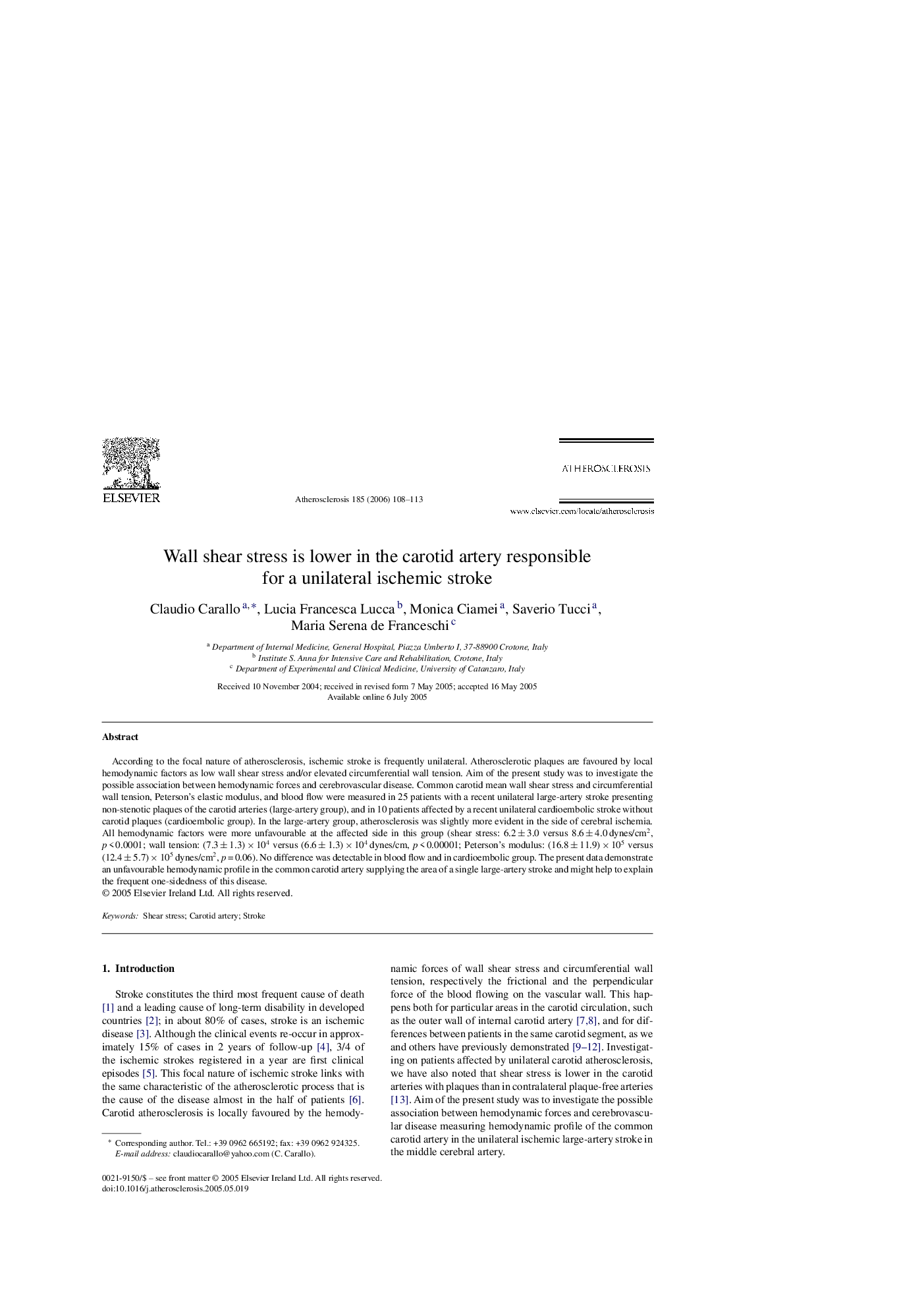| Article ID | Journal | Published Year | Pages | File Type |
|---|---|---|---|---|
| 2895406 | Atherosclerosis | 2006 | 6 Pages |
According to the focal nature of atherosclerosis, ischemic stroke is frequently unilateral. Atherosclerotic plaques are favoured by local hemodynamic factors as low wall shear stress and/or elevated circumferential wall tension. Aim of the present study was to investigate the possible association between hemodynamic forces and cerebrovascular disease. Common carotid mean wall shear stress and circumferential wall tension, Peterson's elastic modulus, and blood flow were measured in 25 patients with a recent unilateral large-artery stroke presenting non-stenotic plaques of the carotid arteries (large-artery group), and in 10 patients affected by a recent unilateral cardioembolic stroke without carotid plaques (cardioembolic group). In the large-artery group, atherosclerosis was slightly more evident in the side of cerebral ischemia. All hemodynamic factors were more unfavourable at the affected side in this group (shear stress: 6.2 ± 3.0 versus 8.6 ± 4.0 dynes/cm2, p < 0.0001; wall tension: (7.3 ± 1.3) × 104 versus (6.6 ± 1.3) × 104 dynes/cm, p < 0.00001; Peterson's modulus: (16.8 ± 11.9) × 105 versus (12.4 ± 5.7) × 105 dynes/cm2, p = 0.06). No difference was detectable in blood flow and in cardioembolic group. The present data demonstrate an unfavourable hemodynamic profile in the common carotid artery supplying the area of a single large-artery stroke and might help to explain the frequent one-sidedness of this disease.
